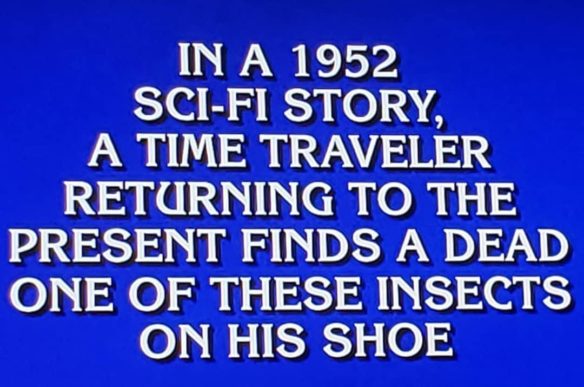(1) STAND BY. The Daily Beast keeps an eye on George R.R. Martin’s blog, where they learned “George R.R. Martin Has Big Problems With HBO Prequel ‘House of the Dragon’”. But George hasn’t said what they are yet.
In a blog post on Friday, author George R. R. Martin said he’s almost ready to speak out about what he thinks went wrong with House of the Dragon Season 2.
“I do not look forward to other posts I need to write, about everything that’s gone wrong with HOUSE OF THE DRAGON… but I need to do that too, and I will,” Martin wrote. “Not today, though.”
It’s a surprising comment from the author, as he’s so far largely avoided saying anything too negative about the series. Even when Game of Thrones turned into a widely-panned disaster in season 8, Martin avoided any severe criticism of the showrunners.
However, fans have speculated for a while now that Martin is frustrated by some of the HotD creative decisions. The HotD showrunners have taken some major liberties with the source material, and they’ve been met with mixed reception from the fandom for it….
(2) DEAD AGAIN. A Neil Gaiman property bites the dust. Deadline reports “’Dead Boy Detectives’ Canceled After One Season At Netflix”. It is based on a comic by Gaiman, who was one of the series’ executive producers.
The first season, which dropped on April 25, will now be the final season for the show, which was originally set up at Max.
The news is not entirely surprisng. Dead Boy Detective spent only three weeks in Netflix’s Top 10 for English-language series, peaking at #2 in Week 1 behind phenom Baby Reindeer.
Based on the comics of the same name by Neil Gaiman and part of The Sandman Universe, Dead Boy Detectives followed Edwin Payne (George Rexstrew) and Charles Rowland (Jayden Revri), “the brains” and “the brawn” behind the Dead Boy Detectives agency. Teenagers born decades apart who find each other only in death, Edwin and Charles are best friends and ghosts… who solve mysteries.
(3) IN PRAISE OF AGE OF MYTHOLOGY. [Item by Steven French.] This week’s gaming newsletter from the Guardian rides a wave of nostalgia: “By Odin’s beard! 22 years on, Age of Mythology is still the god of strategy games”.
While normal people have been getting excited about Oasis reforming, this week I have been totally preoccupied by another blast from the past: Age of Mythology: Retold. For anyone who didn’t spent most of 2002/3 playing games on the family computer while insisting to their parents that they were “educational”, Age of Mythology was a spinoff from the Age of Empires strategy game series. Where Age of Empires II had me playing through the loosely historical campaigns of the likes of William Wallace, Joan of Arc and Genghis Khan, Age of Mythology was instead stuffed with Greek, Norse and Egyptian monsters and stories. Now it’s back, with a story that still offers maximalist mythological fun and so many mini war scenarios that I’d forgotten about that I feel like I’m enjoying them afresh.
You still order your little army men around on the screen, sending them to battle other little army men while you build larger, more sophisticated towns and send villagers to labour in fields, mines and forests to get you resources (which you can use to buy new, better little army men). But in Age of Mythology, you aren’t just playing God – you are one. You can intervene in mortals’ affairs with lightning bolts, healing auras, and meteor storms. As your civilisation progresses, you choose minor gods to complement your abilities and units. You can send a hydra or a colossus or elite Myrmidons into battle alongside your archers and cavalry, and heroes such as Jason and Hippolyta can join the fray, doing extra damage to your enemies’ mythical monsters.
When I was 14, Age of Mythology was absolutely my jam. I was very into my ancient civilisations. At the time I think I still wanted to be an Egyptologist and I was, rather tragically, learning Latin. I remember struggling bravely on my own heroic arc through the long, difficult campaign, in which you guide Atlantean general Arkantos through all three mythological realms. You start off with the Greeks, participating in the fall of Troy, merrily recreating the bit of the myth where Zeus rains thunderbolts down from heaven to tip the scales (though under my control, it was in favour of Agamemnon’s army). Later you join the Egyptians, before ending up in the Norselands, via the underworld. It misses no opportunity to namedrop a God, hero or creature that mythology nerds will enjoy….
(4) MEMORY LANE.
[Written by Cat Eldridge.]
Anniversary: Roughnecks: The Starship Trooper Chronicles (1999)
The animated Roughnecks: The Starship Trooper Chronicles first aired in syndication from the Bohbot Kids Network a quarter of a century ago.
It was produced by Co-Executive Producer’s Verhoeven-Marshall Flat Earth Productions with Richard Raynis as Co-Executive Producer.

As it’s loosely based off both Heinlein’s novel and Verhoeven‘s film that made sense. I say very loosely as this is much more fleshed, with less, dare I say it?, violence for the sake of violence undertaking that the Starship Troopers, the film, was.
The series takes elements of the film and Heinlein’s novel, such as the Skinnies, powered armor suits and drop pods. The series also adds some original elements such as the war starts on Pluto while omitting the political aspects of both.
Now Duane Capizzi who later wrote the Superman: Doomsday film was one of the actual producers. He was writer and producer of The Batman series, a neat take on that character. Executive producers are just there for their money. Really they are.
The voice cast was rather large and consisted largely of no one you’ll recognize without Googling them.
The series would last one season before being canceled by Columbia TriStar Television and Sony Pictures on a cliffhanger, as the last four episodes weren’t produced which makes absolutely no sense. You can see the trailer here.
The fan club — of course it had a fan club though I think it largely went absent without official leave — had put all the episodes up on the dedicated channel on YouTube. That is long gone. As always please don’t provide links to any pirated copies that are up.
For the complete set, your best place is eBay. It’ll still be at least fifty dollars. Is it worth it? Oh yes.
(5) COMICS SECTION.
- F Minus stresses the importance of names.
- Bizarro has a battle of the bands.
- Crankshaft has a supporter.
- Saturday Morning Breakfast Cereal discusses farming techniques.
(6) JUSTWATCH MARKET STATS. JustWatch is now reporting on ad supported on demand streaming providers in the US. Their report is based on the 13 million monthly users on JustWatch in the US selecting their streaming services, clicking out to streaming offers and marking titles as seen.
AVOD market shares in Q2 2024
At the top of charts, Tubi TV successfully garners more shares than YouTube and The Roku Channel combined (27%). Meanwhile, Freevee has a strong hold in 2nd place with twice the size of The Roku Channel.

Market share development in 2024
Leading growth into 2024 are Tubi TV and The Roku Channel with a strong +1% increase by June. Meanwhile, Freevee struggles to keep its hold, losing a -1% of shares.

(7) WARP FACTOR OOPS! [Item by Steven French.] Who hasn’t asked this question?! “What if you flew your warp drive spaceship into a black hole?” Phys.org tries to supply an answer.
Warp drives have a long history of not existing, despite their ubiquitous presence in science fiction. Writer John Campbell first introduced the idea in a science fiction novel called Islands of Space.
These days, thanks to Star Trek in particular, the term is very familiar. It’s almost a generic reference for superliminal travel through hyperspace. Whether or not warp drive will ever exist is a physics problem that researchers are still trying to solve, but for now, it’s theoretical.
Recently, two researchers looked at what would happen if a ship with warp drive tried to get into a black hole. The result is an interesting thought experiment. It might not lead to starship-sized warp drives but might allow scientists to create smaller versions someday. The paper is published in the journal Physics Letters B.
Remo Garattini and Kirill Zatrimaylov theorized that such a drive could survive inside a so-called Schwarzschild black hole. That’s provided the ship crosses the event horizon at a speed lower than that of light.
Theoretically, the black hole’s gravitational field would decrease the amount of negative energy required to keep the drive going. If it did, the ship could pass through and somehow use it to get somewhere else without getting crushed. Furthermore, the mathematics behind this idea points the way toward the possible creation of mini-warp drives in lab settings….
(8) DOUBLE DOOM. Nature reports “This unlucky star got mangled by a black hole — twice”. “Bursts of light hint that a star in a nearby galaxy was partially shredded in 2022 and 2024 and might be in for another round.”

A star in a nearby galaxy has been spotted being almost destroyed by a supermassive black hole not just once, but twice — and could have another brush with destruction soon.
Almost every large galaxy is thought to house a supermassive black hole at its centre. When a star passes too close to such a black hole, it is stripped of material, releasing a burst of light. The star is typically torn apart, but if it survives, the event is called a partial tidal disruption.
Zheyu Lin at the University of Science and Technology of China in Hefei and his colleagues found that a star in a galaxy not far from the Milky Way endured partial tidal disruptions in both 2022 and 2024. The team identified these events by observing similar bursts of light from the galaxy’s centre.
The researchers suggest that what they call the “unluckiest star” orbits near to its galaxy’s supermassive black hole and undergoes a partial tidal disruption each time it comes closest to the black hole. The team hopes to observe a third partial tidal disruption in the next two years.
You can see the research paper here.
[Thanks to Teddy Harvia, Mike Kennedy, Andrew Porter, John King Tarpinian, Chris Barkley, Cat Eldridge, SF Concatenation’s Jonathan Cowie, Steven French, and Kathy Sullivan for some of these stories. Title credit belongs to File 770 contributing editor of the day Ingvar.]





